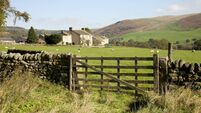No better time to enjoy our historic courses

Irish golf clubs have had plenty to celebrate in 2019.
The return of the Open Championship and Shane Lowry’s historic victory, not to mention the Amateur Championship at Portmarnock and James Sugrue’s victory are just two reasons… but there are plenty of others with two dozen courses celebrating important anniversaries.
















